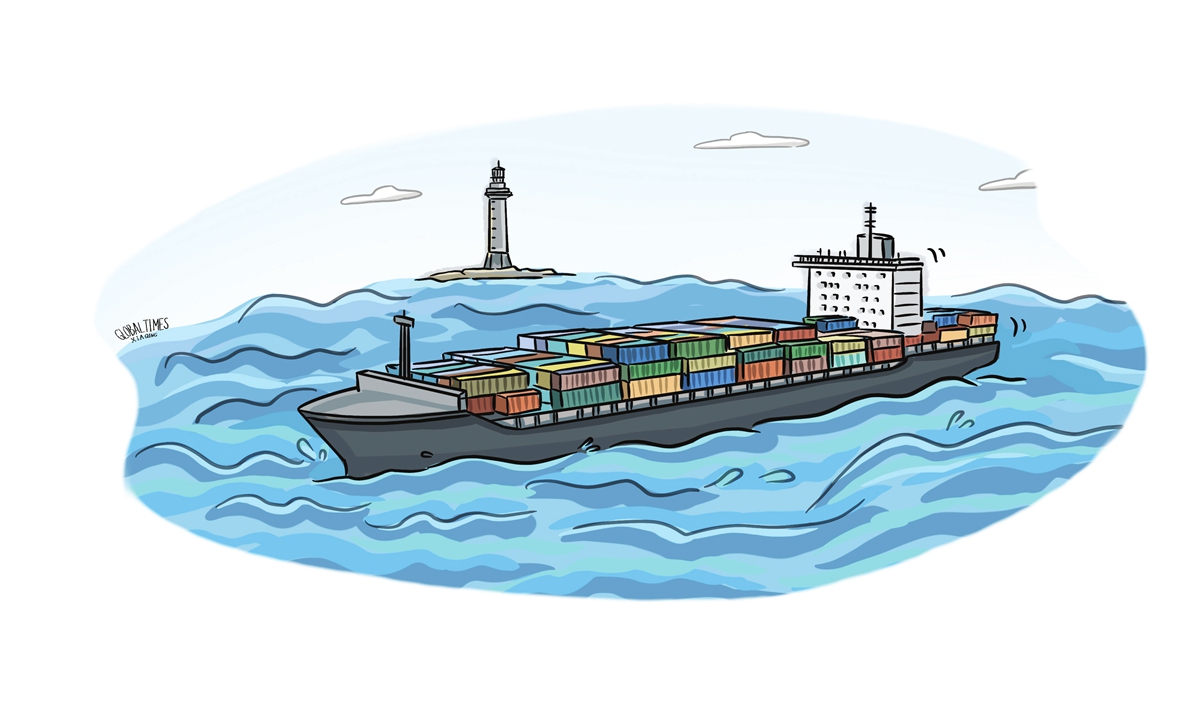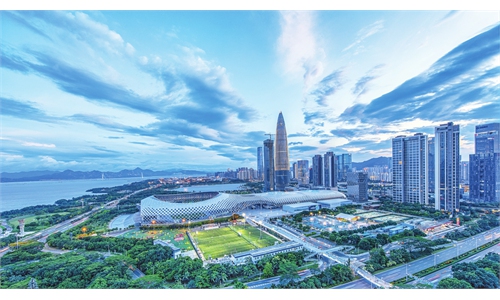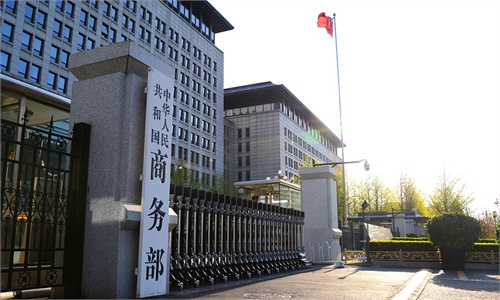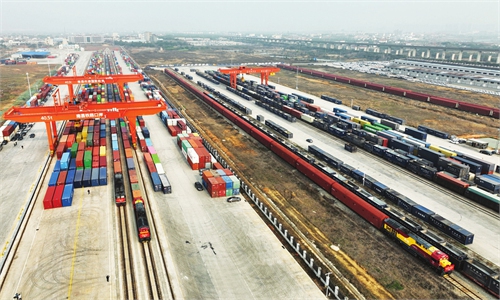
Illustration: Xia Qing/Global Times
As global shipping giants are forced to divert their vessels via the Cape of Good Hope at the southern tip of Africa, the world is focusing on the security situation in the Red Sea, or more precisely, the smoothness of the trade routes and supply chains between Europe and Asia.More economists have stressed the urgency of diversified Eurasian trade routes, which should be noted by European policymakers, some of whom still view the Belt and Road Initiative (BRI) through a geopolitical lens, although the China-proposed initiative has helped bridge infrastructure gaps and improved trade connectivity.
Europe has benefited from an open and multilateral trade system that brought prosperity and big dividends to Europe and the world. Years ago, Asia-Europe trade had already exceeded half of world trade, which reflected active exchanges in Eurasia. A case in point is trade between China and the EU.
In 2022, China was the third-largest export market and largest source of imports for the EU. People should recognize the importance of maintaining open and connected supply chains, and work to ensure that trade flows are unimpeded and that trade routes and critical infrastructure facilities remain open, including sea freight routes.
The Red Sea lies south of the Suez Canal, the most significant waterway connecting Europe to Asia and East Africa. If this route continues to be blocked, more vessels that were due to sail through the Red Sea will be forced to re-route around the Cape of Good Hope, meaning longer transportation times and higher shipping rates. Global trade urgently needs a route that is more economical than detouring southward around the Cape of Good Hope.
The China-Europe Railway Express is an appropriate option. These freight trains have become an important trade route across the Eurasian continent and an artery of economic development. The line is a "steel caravan" that could help importers and exporters get through the ongoing Red Sea crisis.
Amid global warming, the commercial value of the Arctic shipping route is back in the spotlight, an important area where countries have potential and should strengthen collaboration. As reported, the venture could reduce the voyage time between Europe and East Asia by eight to 15 days, compared with the southern sea route through the Red Sea and the Suez Canal.
While the Arctic shipping route, the China-Europe freight service and other efforts aimed at improving connectivity require substantial investment, the benefits of diversified trade routes cannot be underestimated.
In terms of infrastructure investment, the BRI has achieved solid results. From a China-proposed initiative to an international practice, the BRI, which celebrates its 10th anniversary in 2023, has become a well-received international public good and a platform for international cooperation. Although Western politicians and media outlets have tried to attack and discredit the BRI, there's no hiding the fact that the BRI will inject positive momentum into the diversification of trade routes and help ensure the stability of global trade and supply chains.
US Secretary of Defense Lloyd Austin has announced that the US, along with several other countries, will conduct joint patrols in the southern Red Sea and the Gulf of Aden. Austin said "this is an international challenge that demands collective action." This may be right; therefore, the solution to this complex international challenge should not be simplistic and one-way.
China has always advocated for the security of international waterways and opposes any acts of attacking civilian vessels. In addition, practical efforts have been made by China to ensure trade route security, maintain supply chain stability and enhance global economic connectivity, through but not limited to approaches including pushing forward BRI cooperation.
A surge in tensions in the Red Sea will probably bring new challenges to China-EU trade, but if we take steps toward each other, strengthen economic connectivity, and diversify trade routes, we can embark on a path leading to shared development, and turn challenges into opportunities. In this process, it is hoped that European countries can adopt an open and pragmatic attitude toward the BRI and global infrastructure cooperation.
The author is a reporter with the Global Times. bizopinion@globaltimes.com.cn



